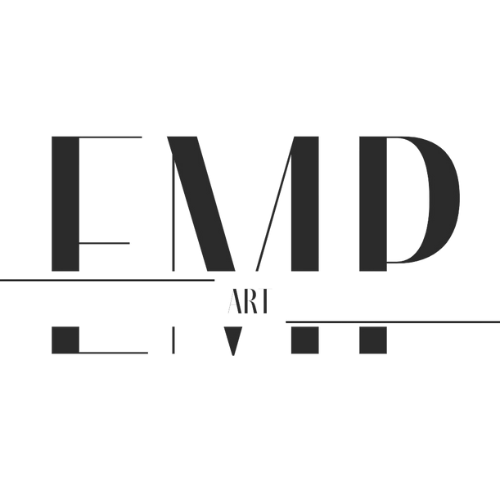The Beauty of Imperfection in Abstract Art
In a culture that often prizes polish, symmetry, and perfection, abstract art stands as a beautiful and necessary rebellion.
It reminds us that life itself is imperfect — messy, layered, emotional — and that these imperfections are not flaws to be hidden, but truths to be honored.
In this blog, I’ll share how imperfection shapes abstract art — and why, at EMP, embracing imperfection is at the very heart of my creative process.
Why Perfection Isn’t the Goal
In abstract art, the pursuit is not toward a flawless surface or a perfectly balanced composition.
Instead, the pursuit is toward truth:
Truth of feeling
Truth of moment
Truth of being fully, vulnerably alive
Perfection, by its nature, closes doors.
It says, “This is complete. This is finished. This is controlled.”
But life rarely feels that way — and neither does true art.
Imperfection keeps the door open for emotion, surprise, and connection.
At EMP, every piece I create is allowed to be exactly what it needs to be — not polished into something tidy, but honored in its raw, layered becoming.
Marks of Life: Brushstrokes, Layers, and Textures
When you look closely at a great abstract painting, you often see:
Visible brushstrokes
Shifting textures
Uneven edges
Surprising overlaps
These marks are not mistakes.
They are the fingerprints of the creative moment — evidence of the artist’s hand, heart, and presence.
In EMP’s work, I intentionally leave traces of the process visible:
Drips that wandered
Strokes that changed direction mid-flight
Layers where earlier colors ghost beneath the surface
These imperfections create texture not just visually, but emotionally.
They invite viewers to feel the life inside the piece — the movement, the uncertainty, the freedom.
Emotional Honesty Through Imperfection
Perfection often requires masking — smoothing over rawness to create a pleasing surface.
But imperfection invites honesty.
In abstraction, when we allow spaces to be rough, when we let edges bleed and colors collide, we mirror the way real emotions move through us:
In waves, not straight lines
In layers, not neat compartments
In contradictions, not simple answers
At EMP, I believe that when we allow imperfection in art, we create room for deeper emotional connection — room for viewers to find themselves, messiness and all, inside the work.
The Japanese Concept of Wabi-Sabi
The idea that imperfection holds beauty is not new.
In Japanese philosophy, wabi-sabi honors the beauty found in impermanence, imperfection, and incompleteness.
A cracked ceramic bowl
A weathered piece of wood
A faded textile worn from use
These objects are valued not despite their flaws, but because of them.
They carry history, humanity, and story.
Abstract art, especially at EMP, follows a similar path — valuing the marks of process, the traces of touch, and the echoes of emotion over sterile “perfection.”
How Imperfection Creates Connection
When we encounter a piece of abstract art that embraces imperfection, something softens inside us.
We recognize ourselves there — our own layered, beautiful, unfinished selves.
Great abstract art doesn’t demand admiration.
It invites companionship.
It whispers:
“You, too, are enough exactly as you are — unfinished, imperfect, fully alive.”
At EMP, it is my hope that every piece offers that kind of companionship — a mirror of the beauty already living within you.
Explore EMP’s Imperfect and Beautiful Works
Honoring the Journey, Not Just the Outcome
In the studio, moments of frustration, uncertainty, or surprise often lead to the most meaningful breakthroughs.
It’s not about forcing a piece into being “correct” — it’s about listening to where it wants to go, even if that path is messy.
Art, like life, is a journey of becoming.
When we honor the journey — with all its detours, contradictions, and moments of grace — we create not just paintings, but living expressions of human spirit.
And that, to me, is the real beauty of imperfection.
